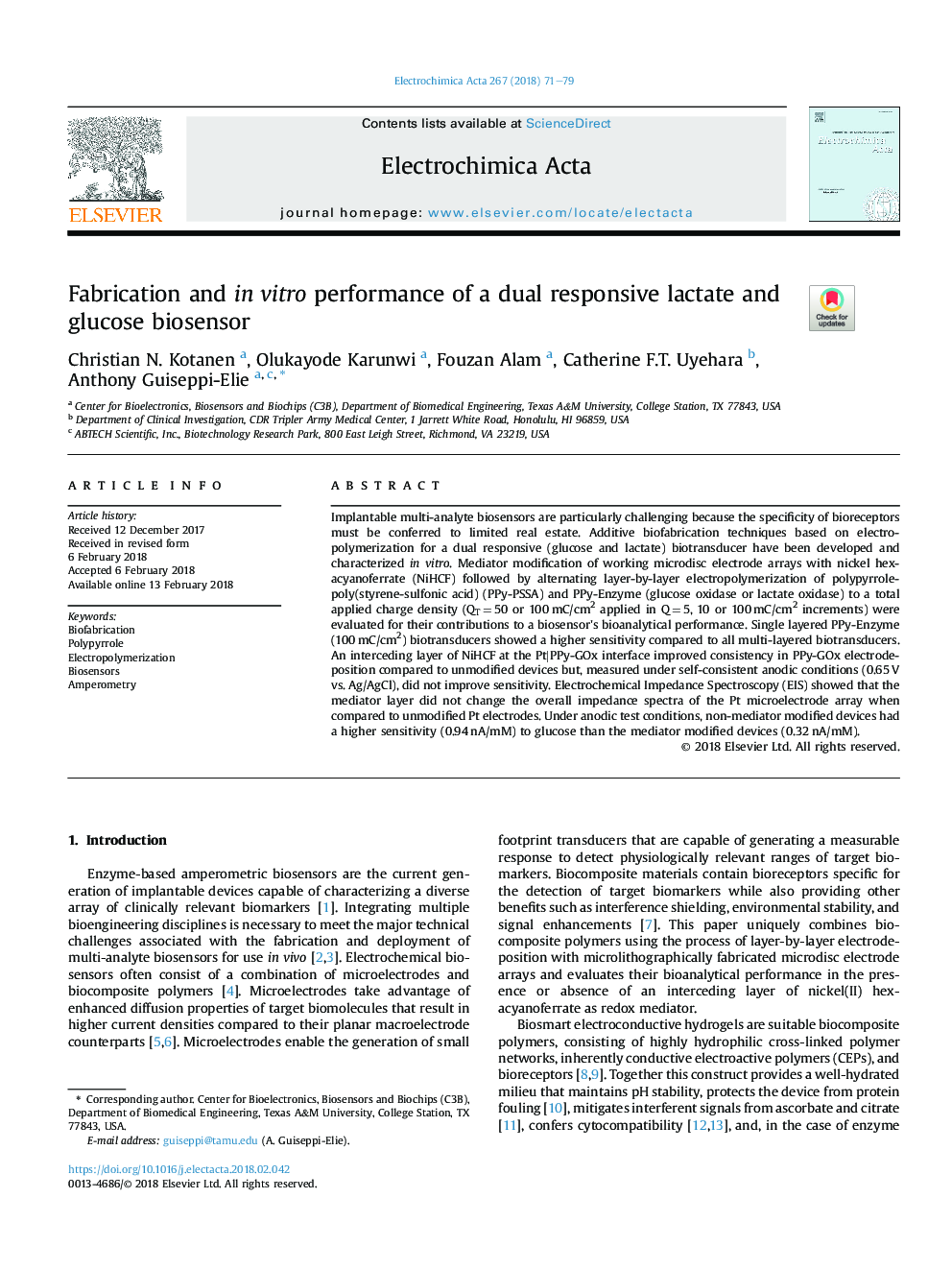| Article ID | Journal | Published Year | Pages | File Type |
|---|---|---|---|---|
| 6603897 | Electrochimica Acta | 2018 | 9 Pages |
Abstract
Implantable multi-analyte biosensors are particularly challenging because the specificity of bioreceptors must be conferred to limited real estate. Additive biofabrication techniques based on electropolymerization for a dual responsive (glucose and lactate) biotransducer have been developed and characterized in vitro. Mediator modification of working microdisc electrode arrays with nickel hexacyanoferrate (NiHCF) followed by alternating layer-by-layer electropolymerization of polypyrrole-poly(styrene-sulfonic acid) (PPy-PSSA) and PPy-Enzyme (glucose oxidase or lactate oxidase) to a total applied charge density (QTâ¯=â¯50 or 100â¯mC/cm2 applied in Qâ¯=â¯5, 10 or 100â¯mC/cm2 increments) were evaluated for their contributions to a biosensor's bioanalytical performance. Single layered PPy-Enzyme (100â¯mC/cm2) biotransducers showed a higher sensitivity compared to all multi-layered biotransducers. An interceding layer of NiHCF at the Pt|PPy-GOx interface improved consistency in PPy-GOx electrodeposition compared to unmodified devices but, measured under self-consistent anodic conditions (0.65â¯V vs. Ag/AgCl), did not improve sensitivity. Electrochemical Impedance Spectroscopy (EIS) showed that the mediator layer did not change the overall impedance spectra of the Pt microelectrode array when compared to unmodified Pt electrodes. Under anodic test conditions, non-mediator modified devices had a higher sensitivity (0.94â¯nA/mM) to glucose than the mediator modified devices (0.32â¯nA/mM).
Related Topics
Physical Sciences and Engineering
Chemical Engineering
Chemical Engineering (General)
Authors
Christian N. Kotanen, Olukayode Karunwi, Fouzan Alam, Catherine F.T. Uyehara, Anthony Guiseppi-Elie,
